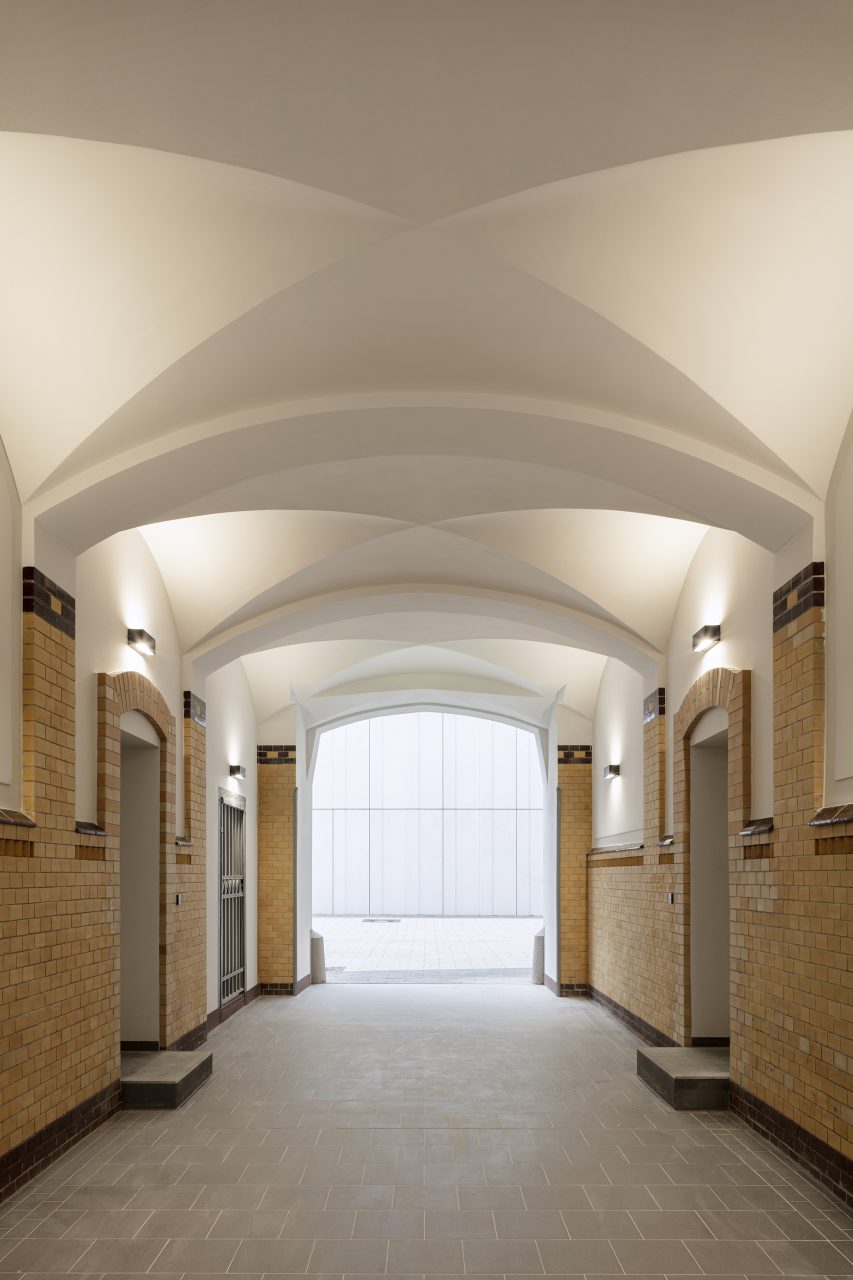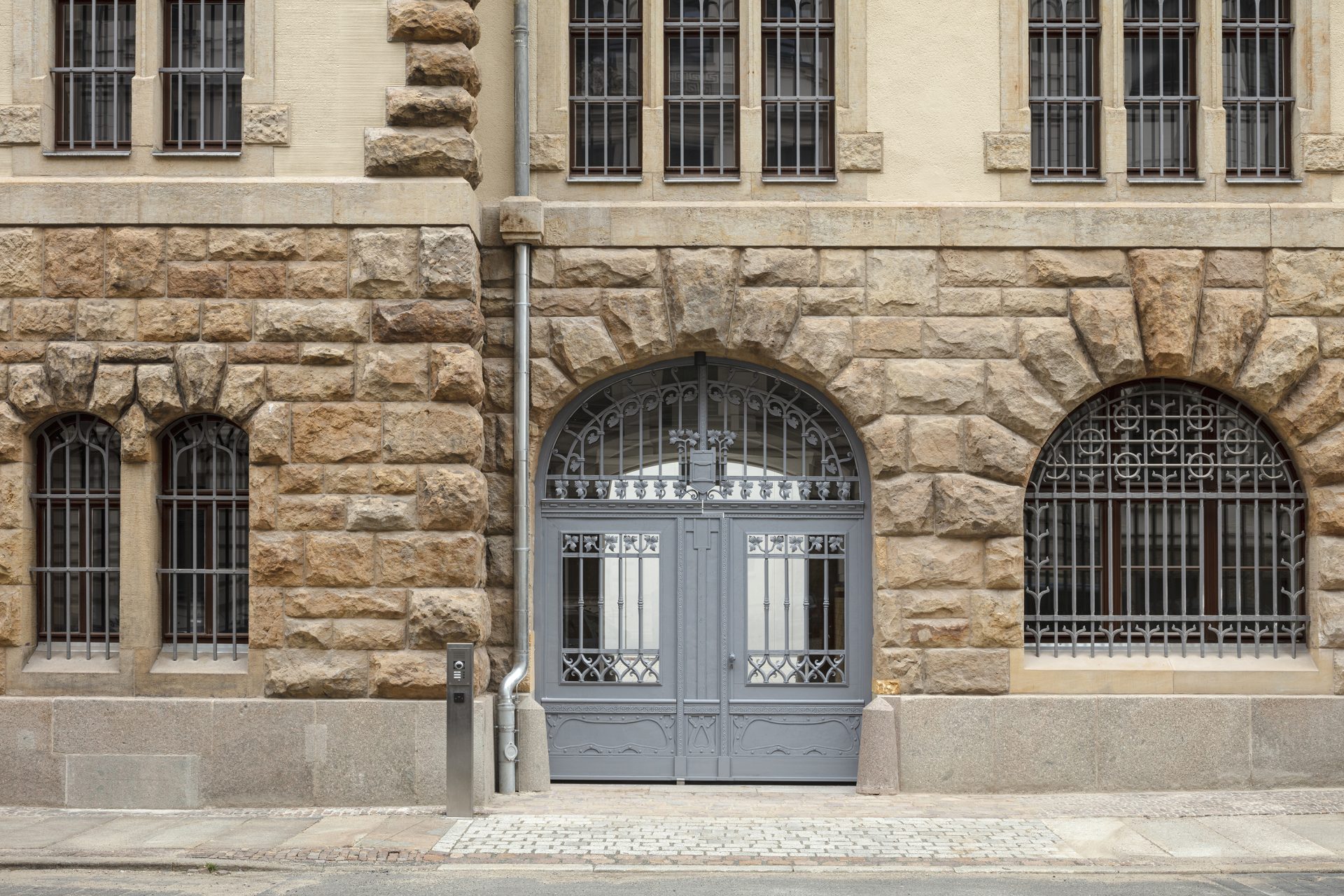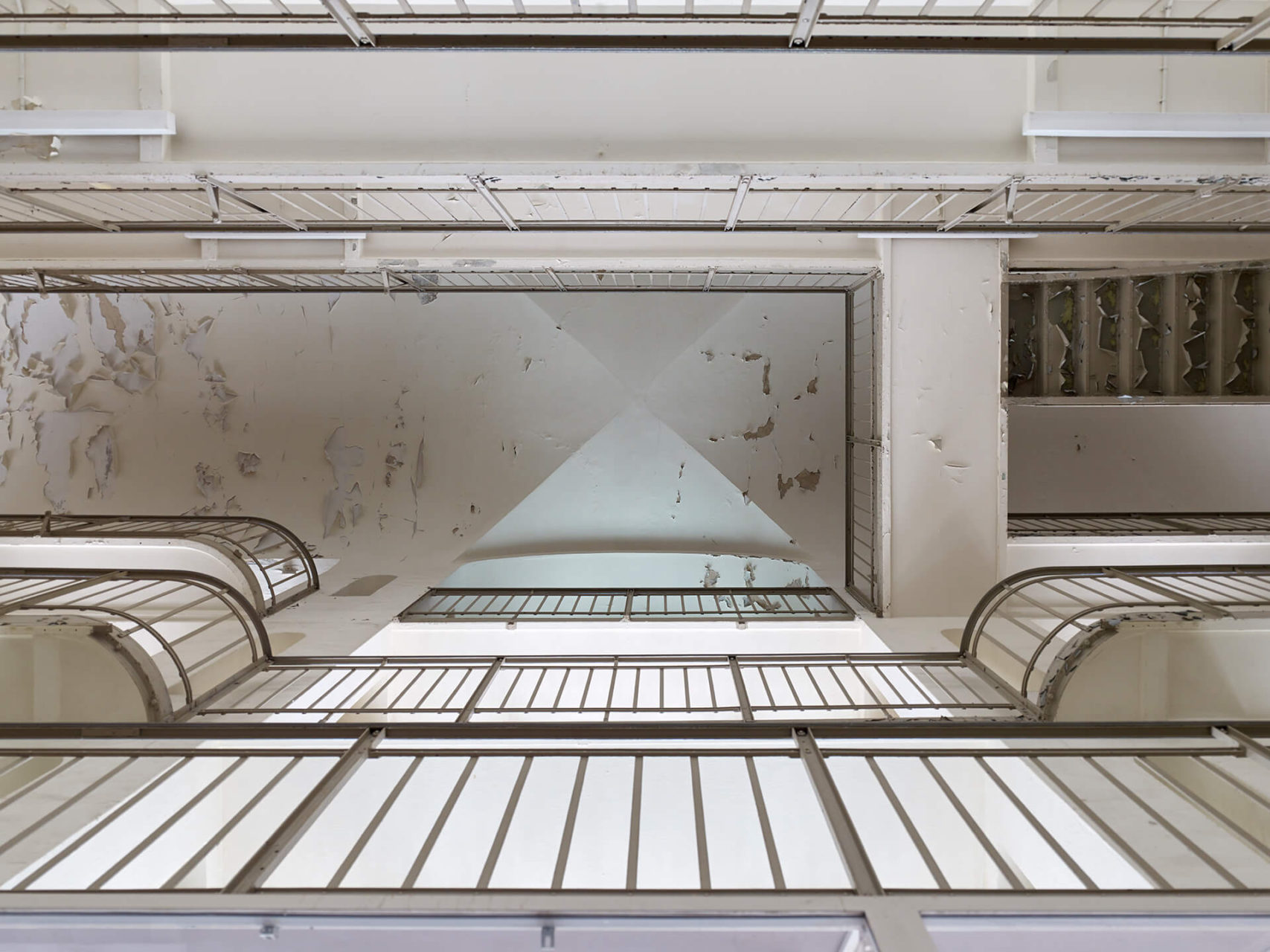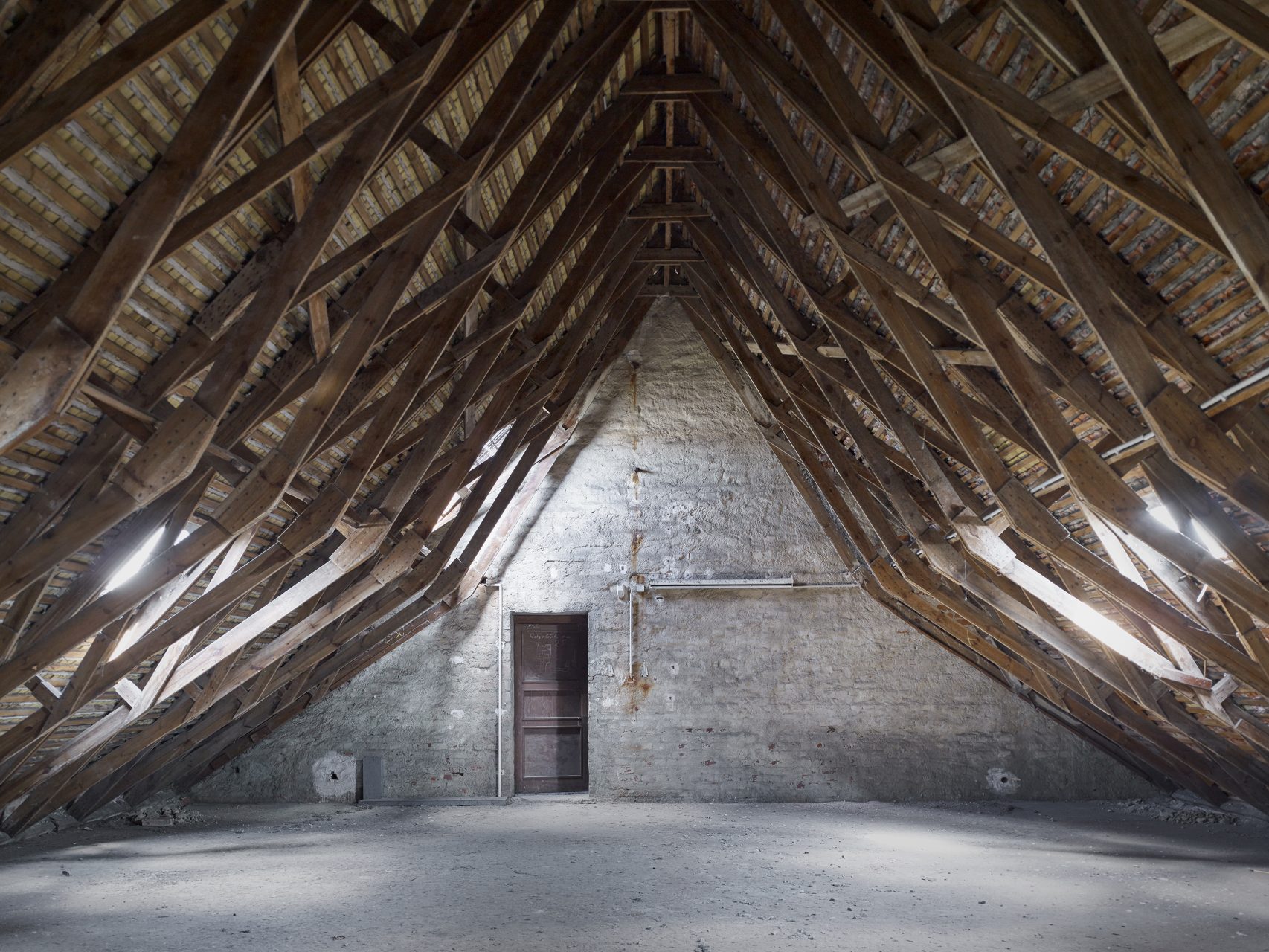The Staatsbetrieb Sächsisches Immobilien- und Baumanagement (SIB), Leipzig I branch, is planning to establish a justice center in Leipzig. As a first building section, the administration of justice was to be accommodated next to the already existing district court. kister scheithauer gross architekten und stadtplaner were awarded the contract for the object planning in the VOF procedure. The project included not only the conversion and restoration of the listed buildings, but also a linking new building on the site of the former prison. This created a total of 8,800 m² of usable space for the public prosecutor’s office. In one part of the building, a memorial was to be set up with reference to the former execution site of the GDR.
Photos before transformation
Project data
contract according to VOF procedure
Owner: Staatsbetrieb Sächsisches Immobilien- und Baumanagement (SIB), Leipzig
Completed: 05/2021
Photos: ©HGEsch
Photos before transformation: ©Yohan Zerdoun
Planning and design: Prosecutor’s office
The spatial program for the Leipzig public prosecutor’s office with 252 employees essentially includes office, record and meeting rooms, archive and registry areas as well as storage areas for evidence. As this is an investigative authority, very high security requirements had to be taken into account for the location of the public prosecutor’s office. The construction project included the renovation and conversion of the listed existing buildings along Arndtstrasse and Alfred-Kästner-Strasse as well as a new connecting building in the inner courtyard of the area.
A structural solution was to be found for the inner courtyard that would mediate between and integrate the existing buildings, create an appropriate closure to the adjacent courtyards of the residential development, and at the same time contain the extensive spatial program.
The design
Our design called for a six-story connecting new building in the form of a simple bar between the two gable walls of the existing buildings. It was complemented by a stepped archive annex (four to six stories) to the fire wall to the neighbor. The T-shaped overall structure complements the courtyard situation. The cubature effects the spatial-urban demarcation of the area of justice and at the same time mediates between the clearly higher district court and the four-story residential buildings through the staggered height of the six-story structure. In contrast to the new building are the landmarked existing buildings. They were functionally linked to the development of the new building. The basic structure of the buildings themselves was maintained. They were refurbished in accordance with the preservation order and converted only in some areas.
Der connecting structure
The new building in the inner courtyard area was to connect the two existing buildings as a simple, clearly structured administrative building with a calm design. The six-story, back-ventilated facade made of light-colored concrete elements was divided horizontally into three parts, each of which connects two story levels vertically.This chosen division takes the building height back and thus mediates against the adjacent four-story residential buildings. The new structure is wider towards the district court from the first floor to the 2nd floor and then recedes in the upper floors. This gives the approximately 70-meter-long, austere-looking building a structured and smooth appearance. Furthermore, the length of the structure is interrupted by the vertical window formats, which appear as blind windows in front of the parapet and the lintel, in the upper and lower areas of each floor.
The transformation (Alfred-Kästner-Straße / Arndtstraße)
The special preservation focus was on the two street-facing facades, including the fully preserved case windows and window bars. Due to security concerns, the internal windows were replaced with new ones. The exterior, street-facing windows and bars were preserved and will be refurbished.
A special feature in the Arndtstraße section of the building were the former detention cells with the impressive staircase system, which extend from the 1st floor to the 4th floor. This area was completely maintained. The evidence and library rooms were located there. The individual cells were given connecting doors in the partition walls. The historic cell doors were renovated as far as possible and closed as blind doors.
In the Alfred-Kästner-Straße part of the building, a former prayer hall is located on the 3rd floor. An additional gallery level with office rooms has been added here, which is accessed by an internal staircase.
The Energy Efficiency Improvement Funding (EE-EFRE) was granted for the refurbishment of the existing buildings. The energy standard planned for the refurbishment exceeds the requirements of the German Energy Saving Ordinance (EnEV).















